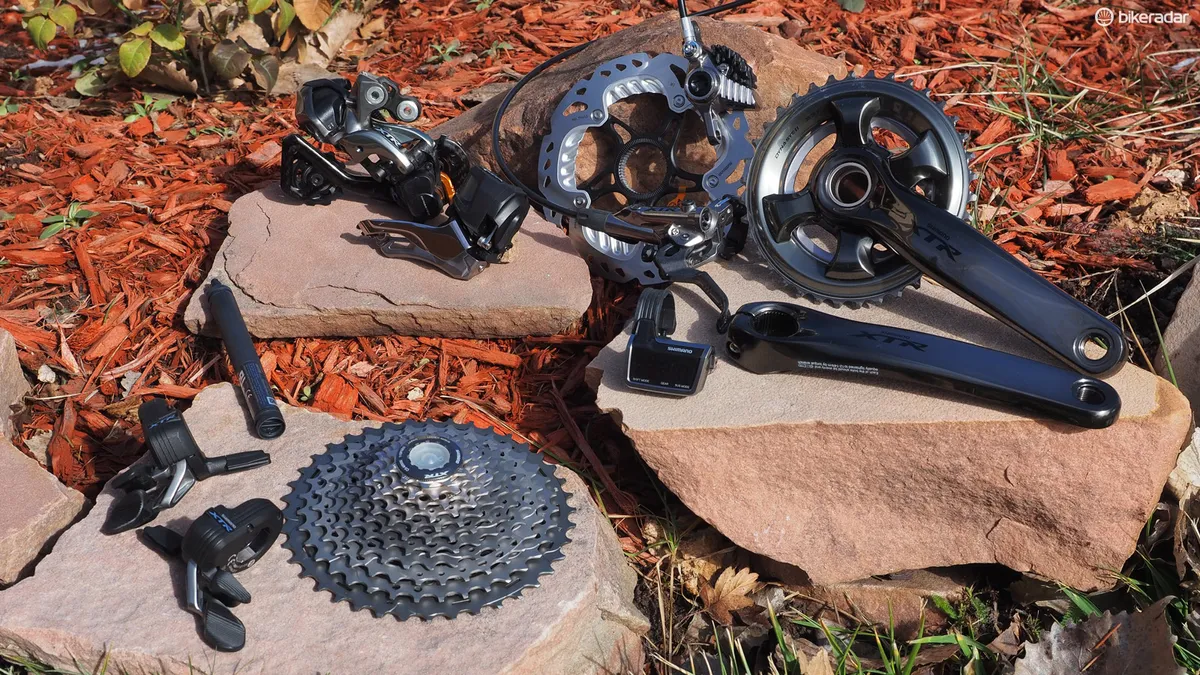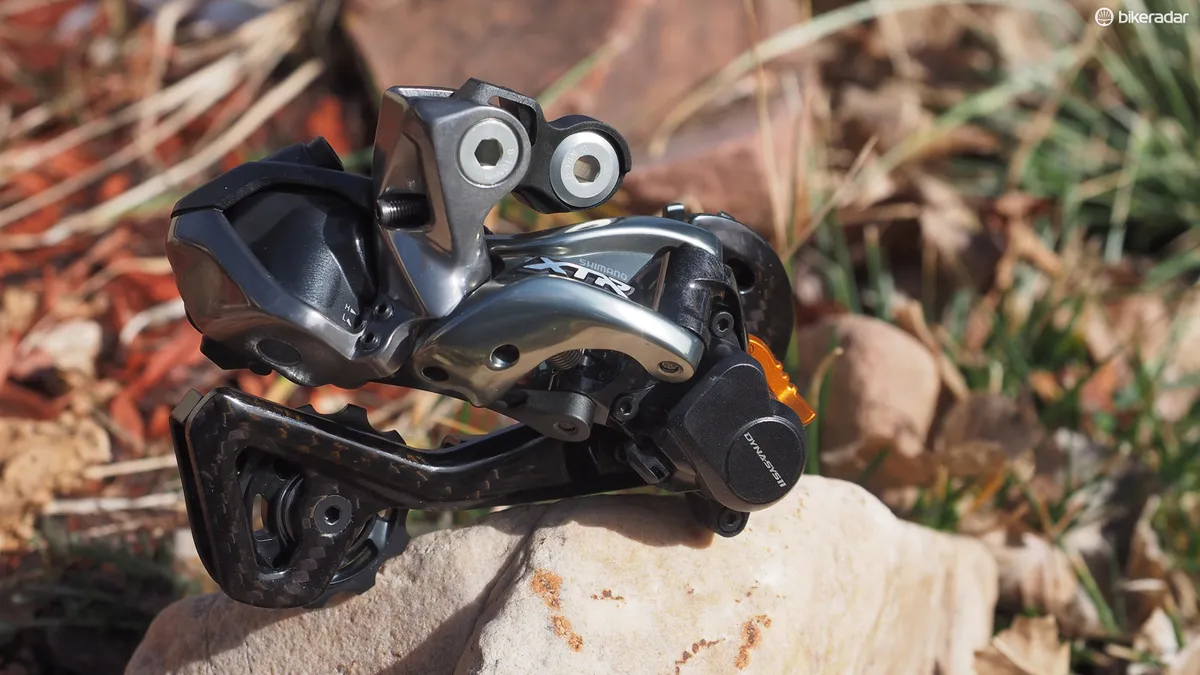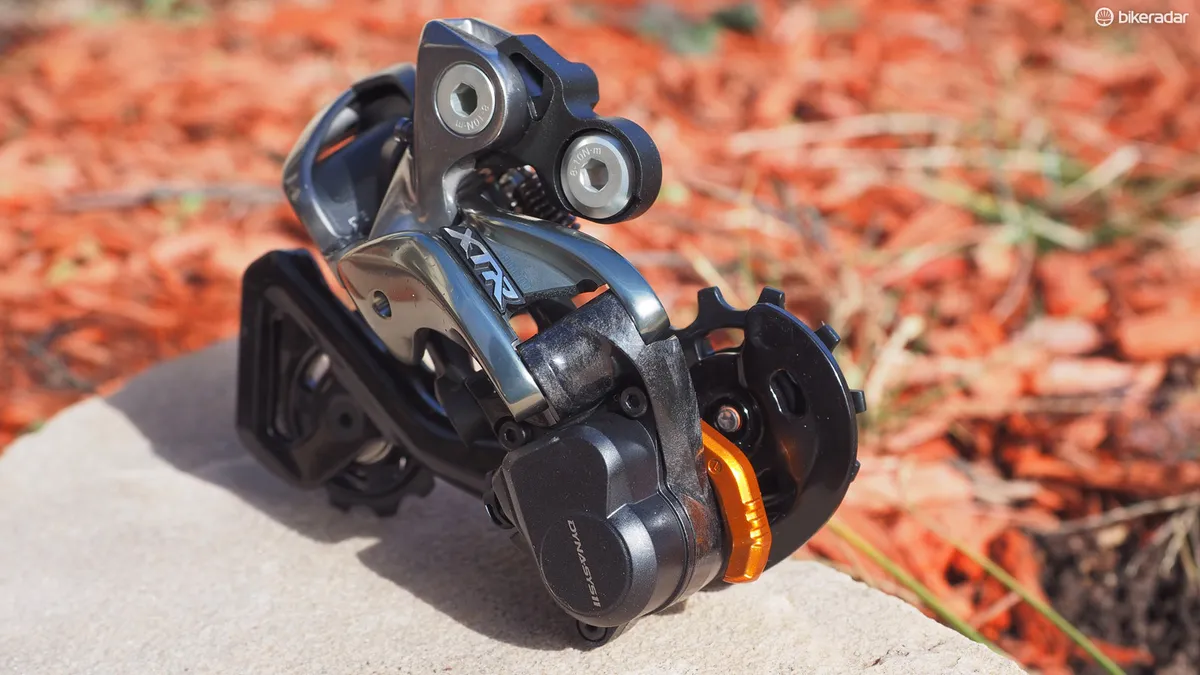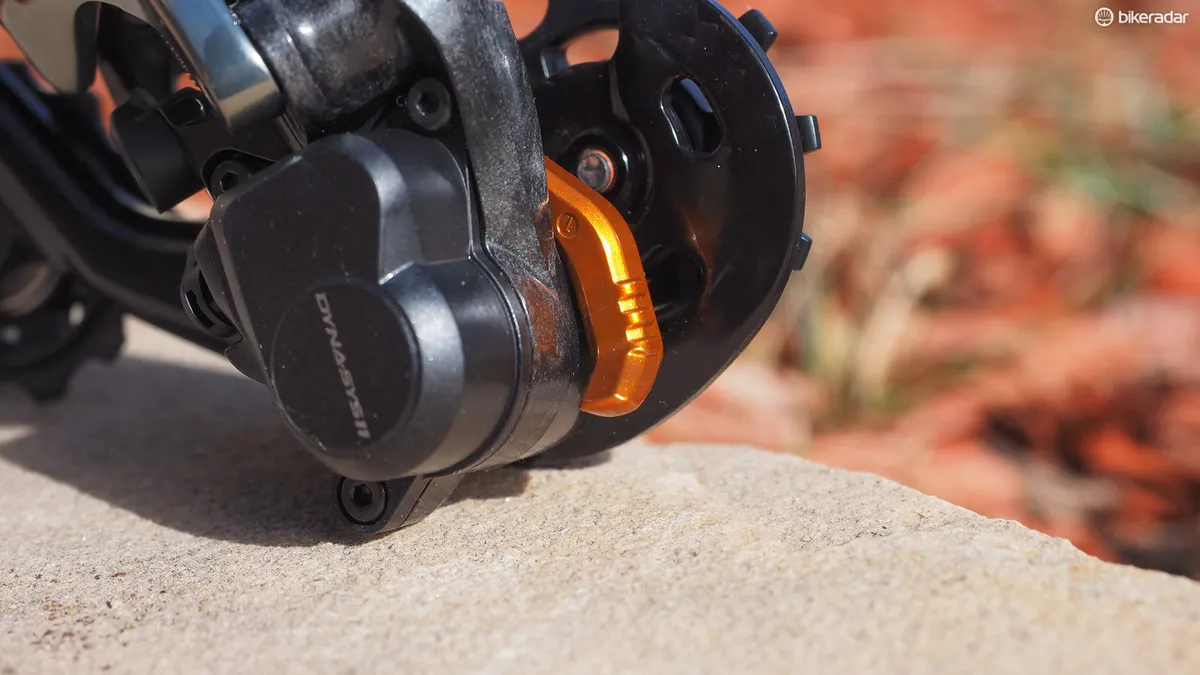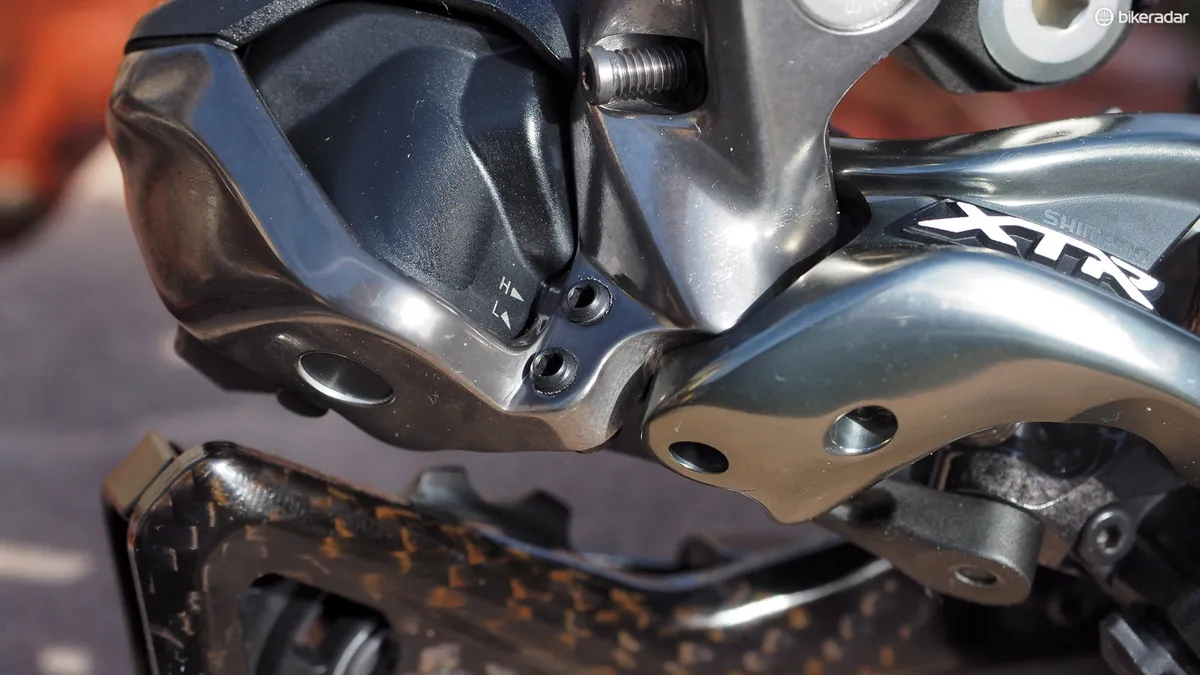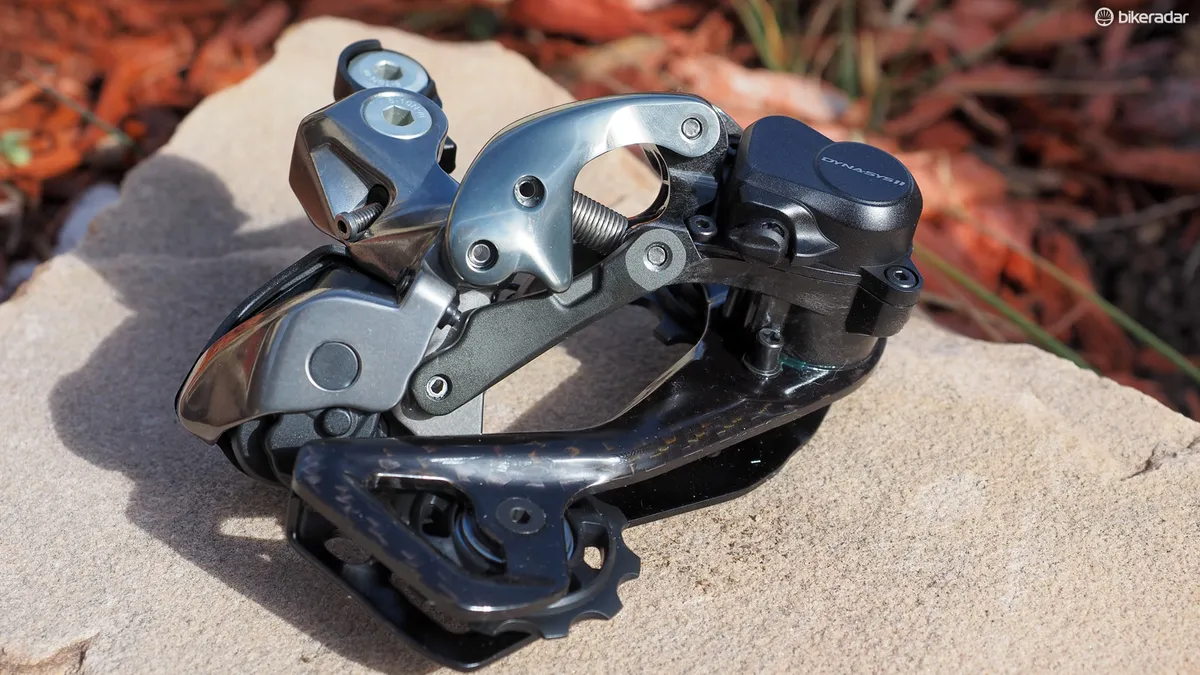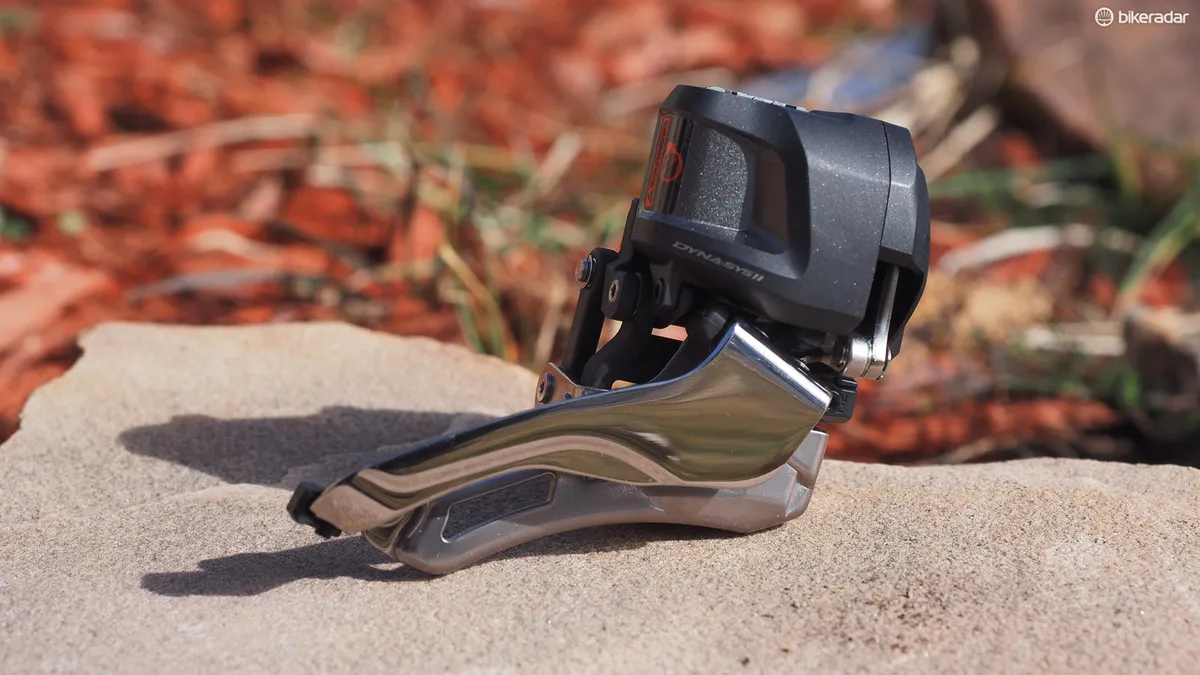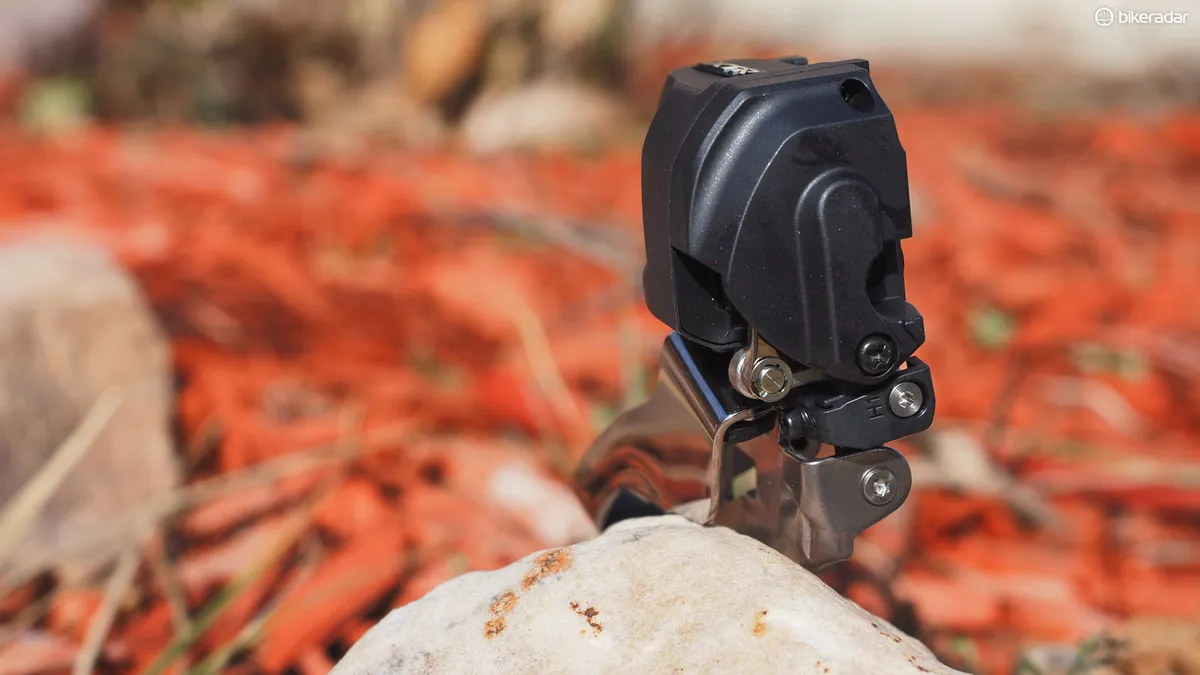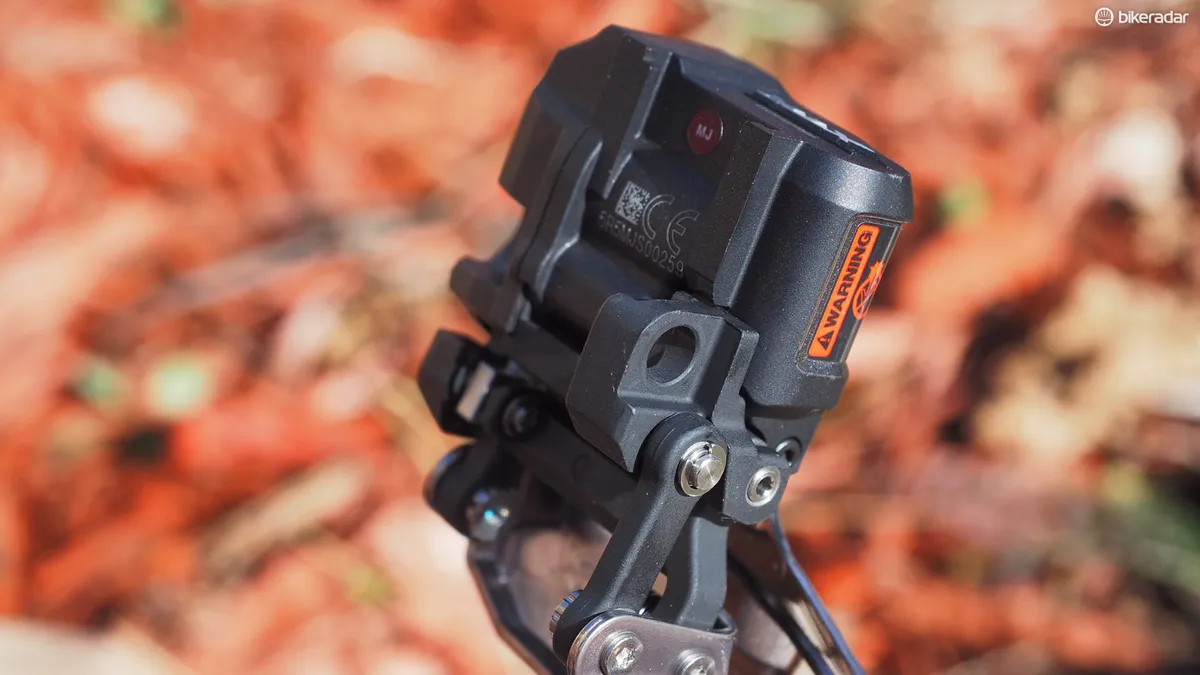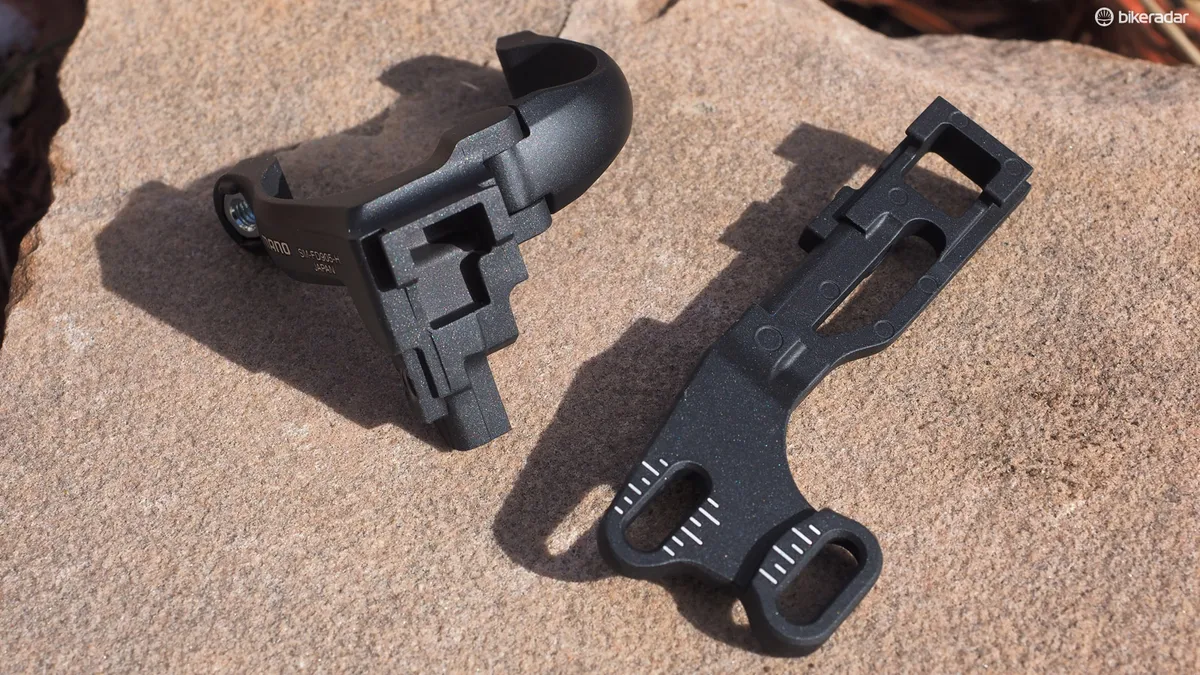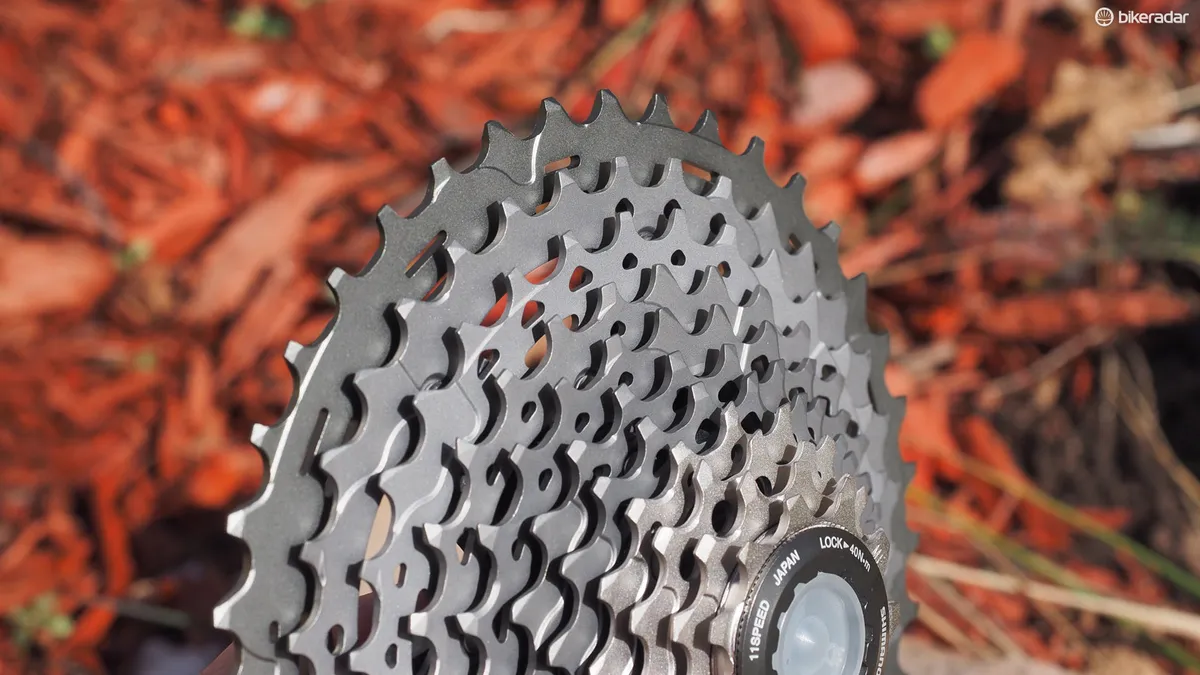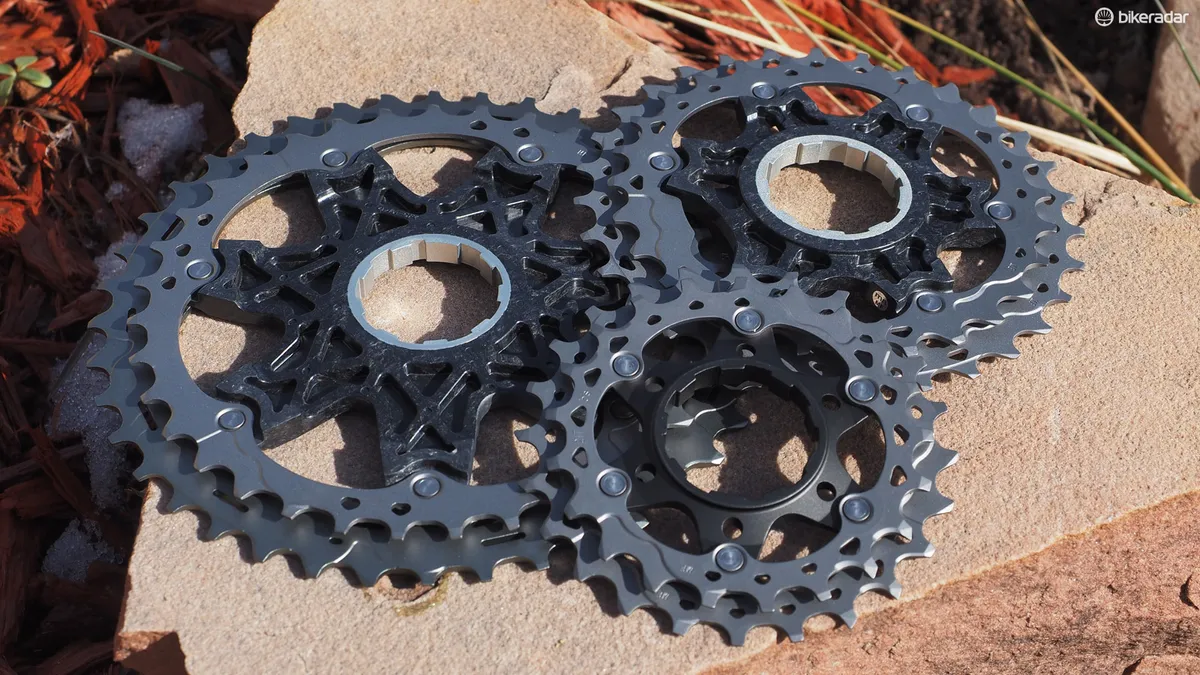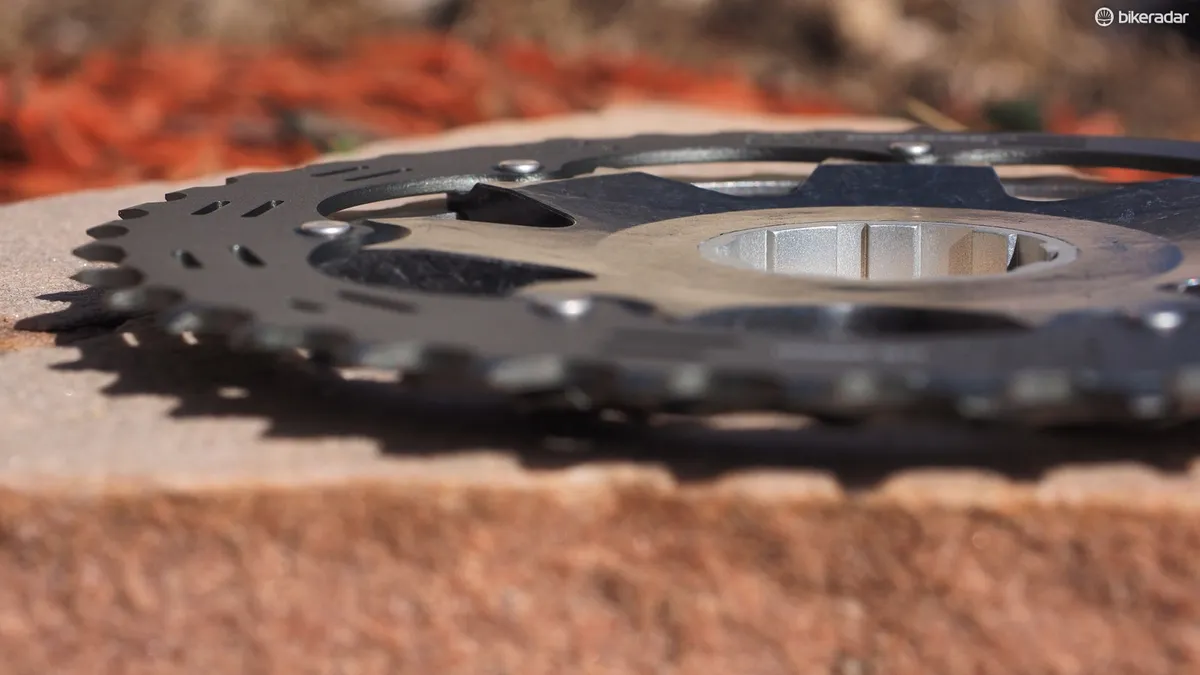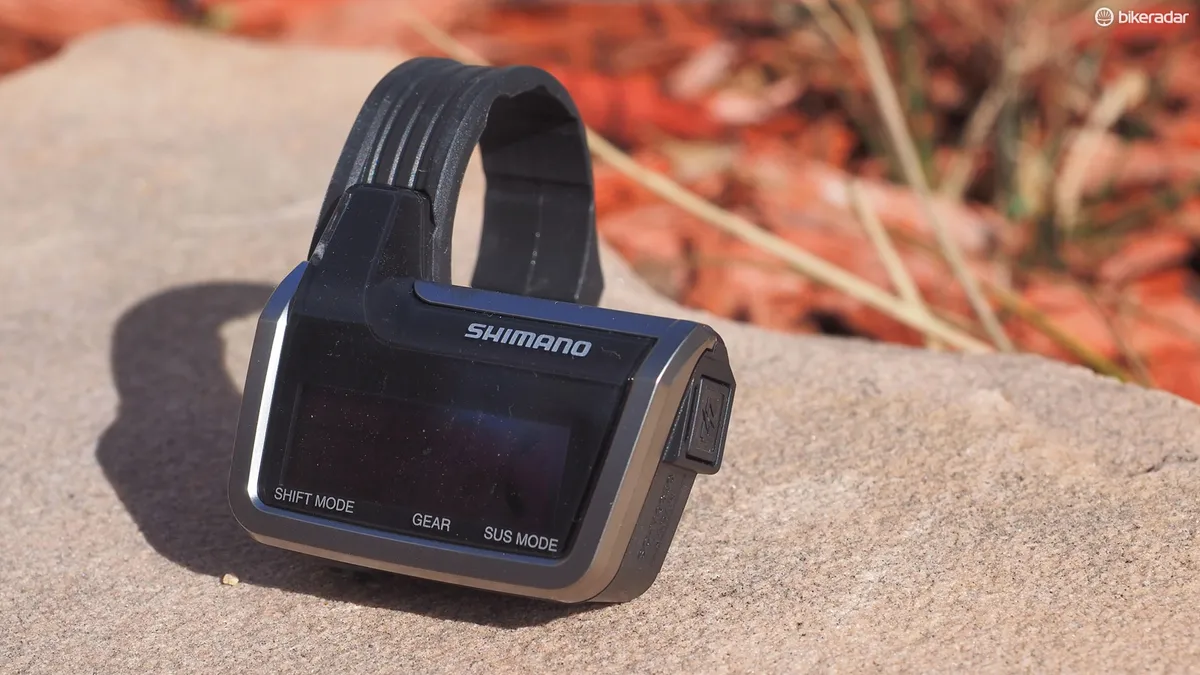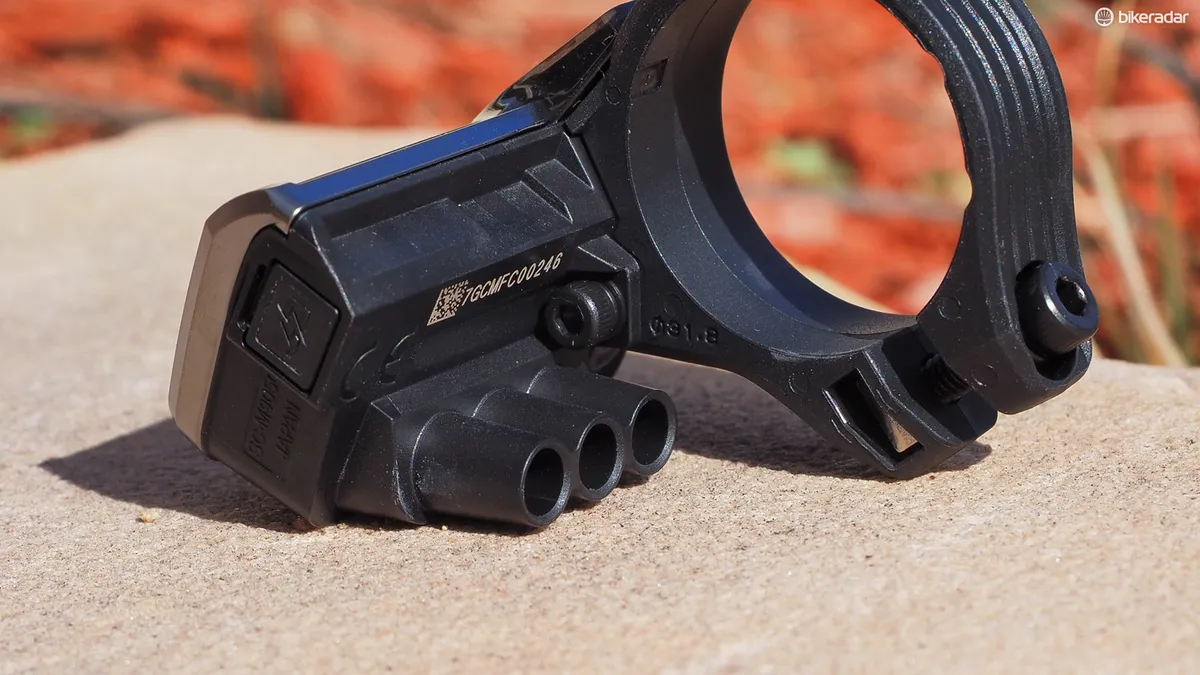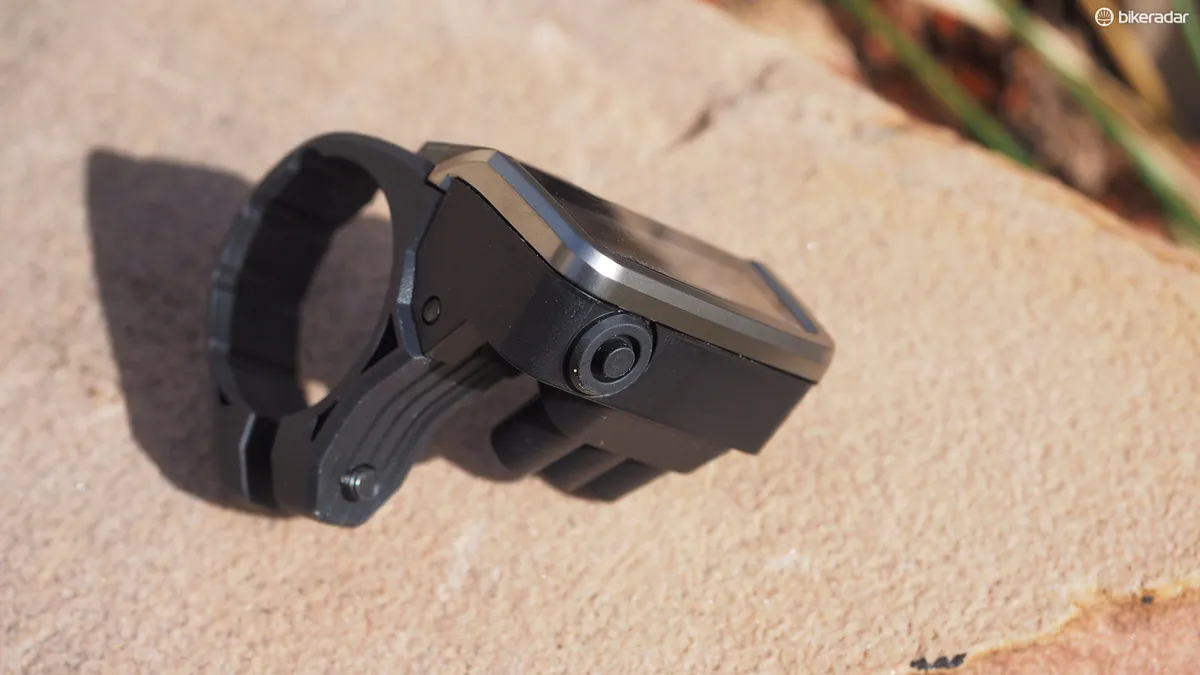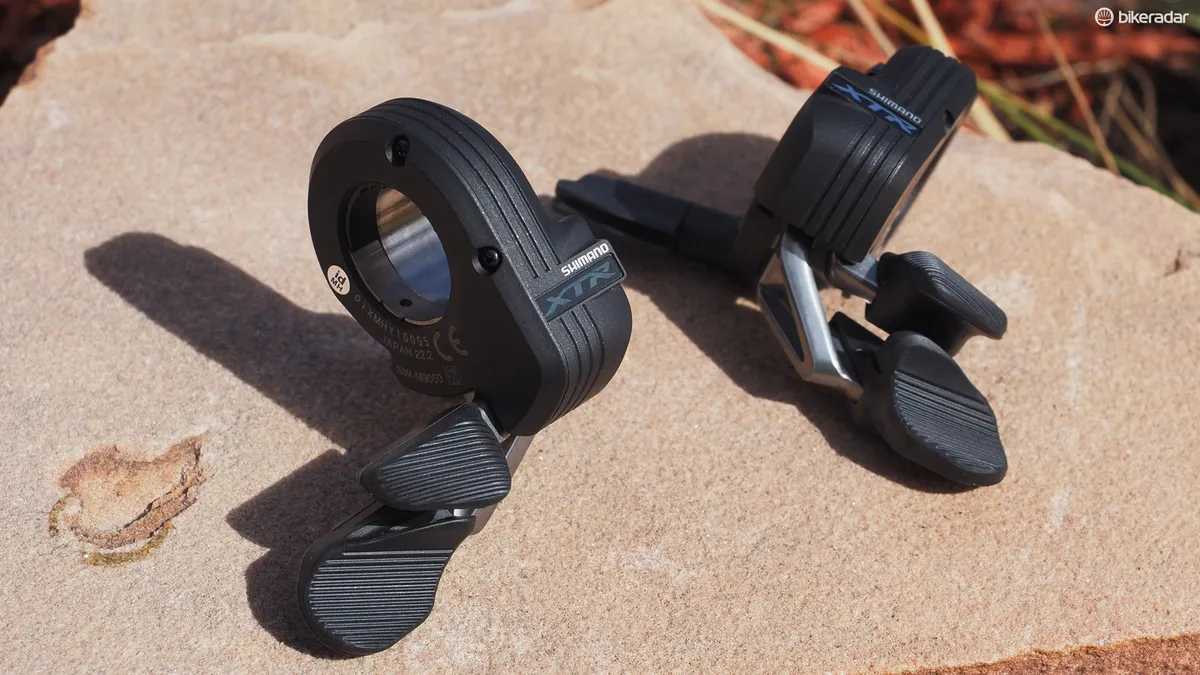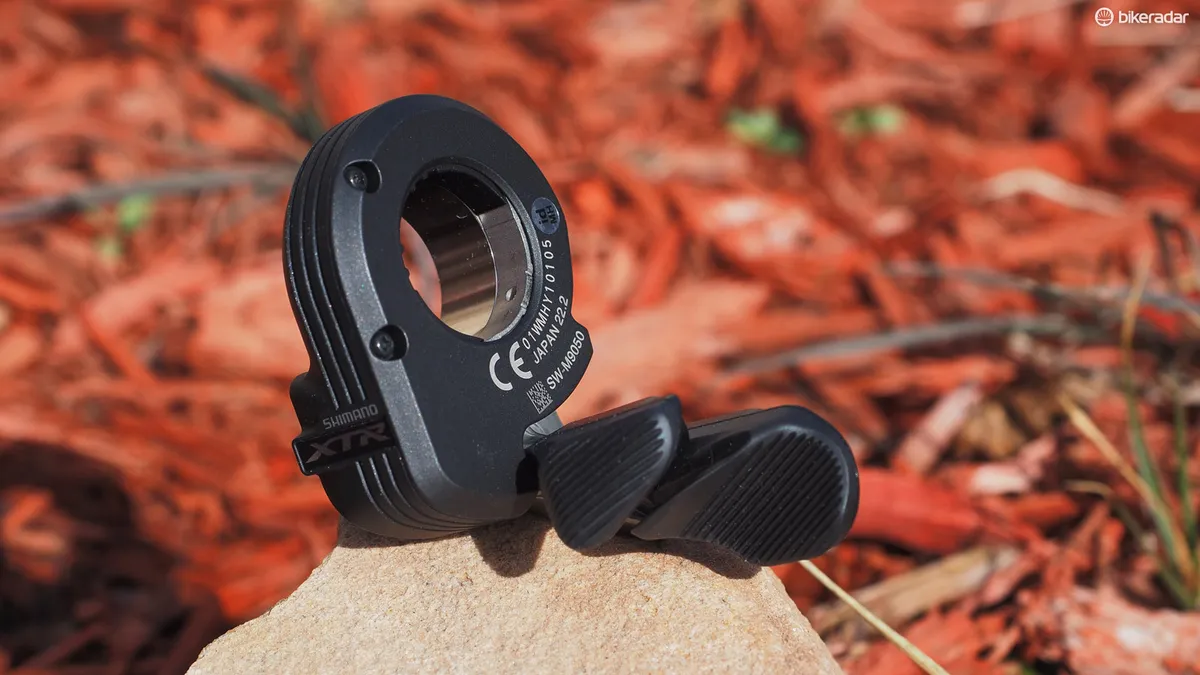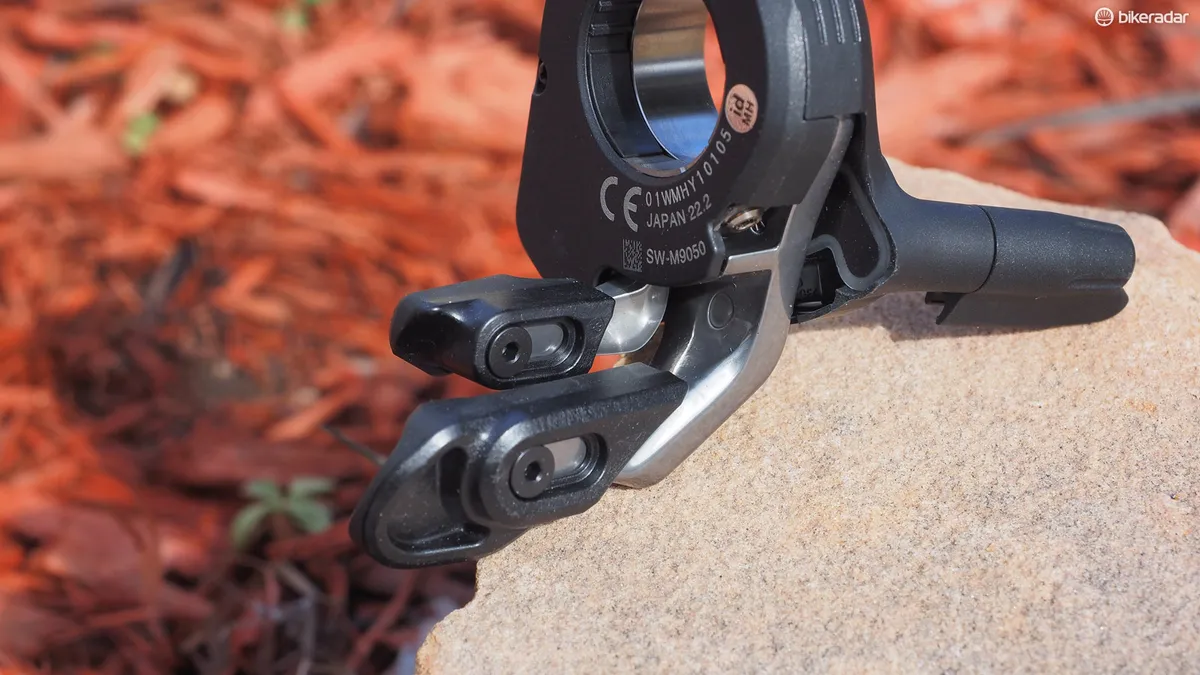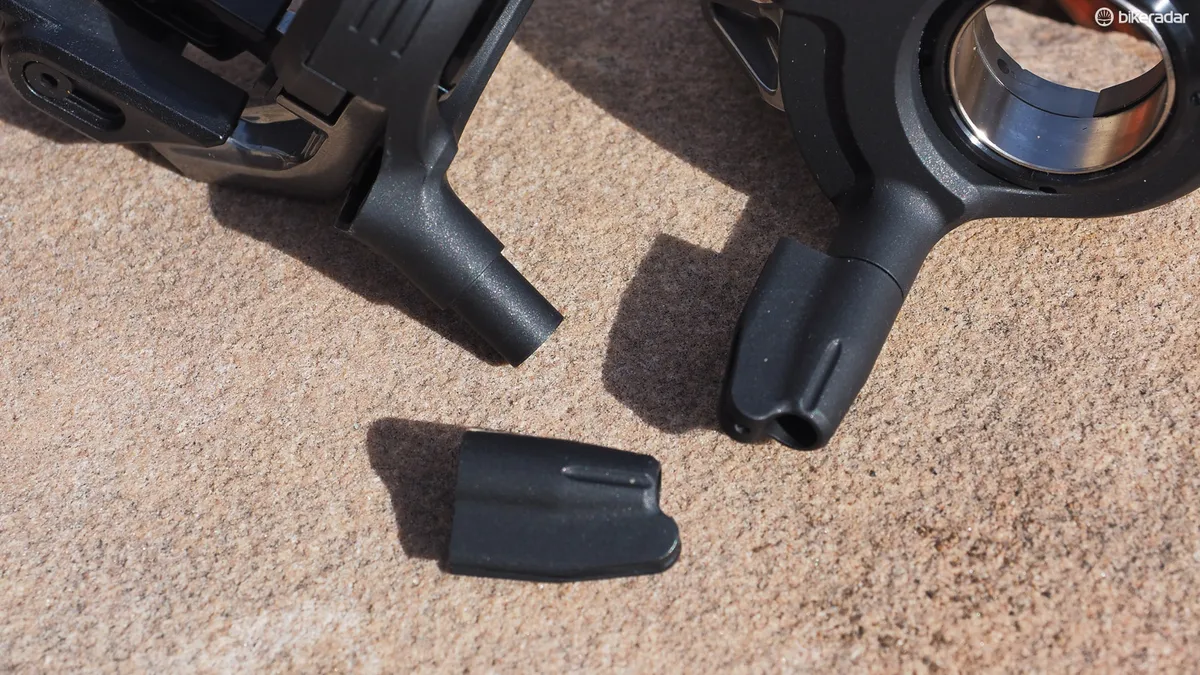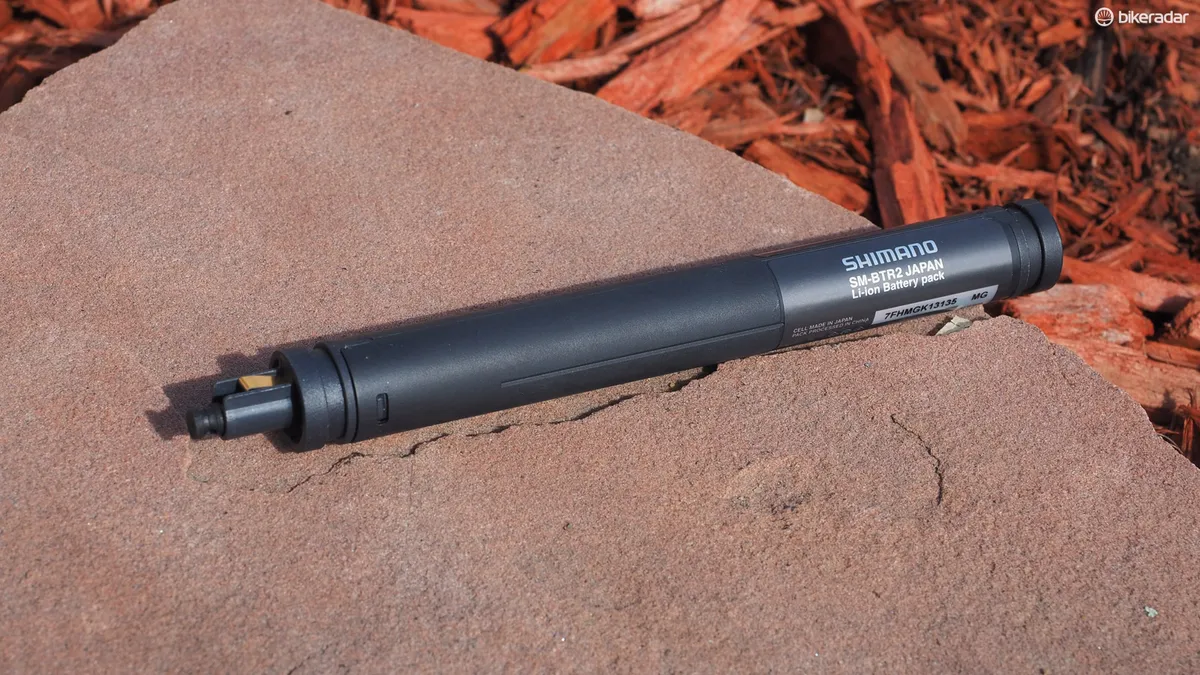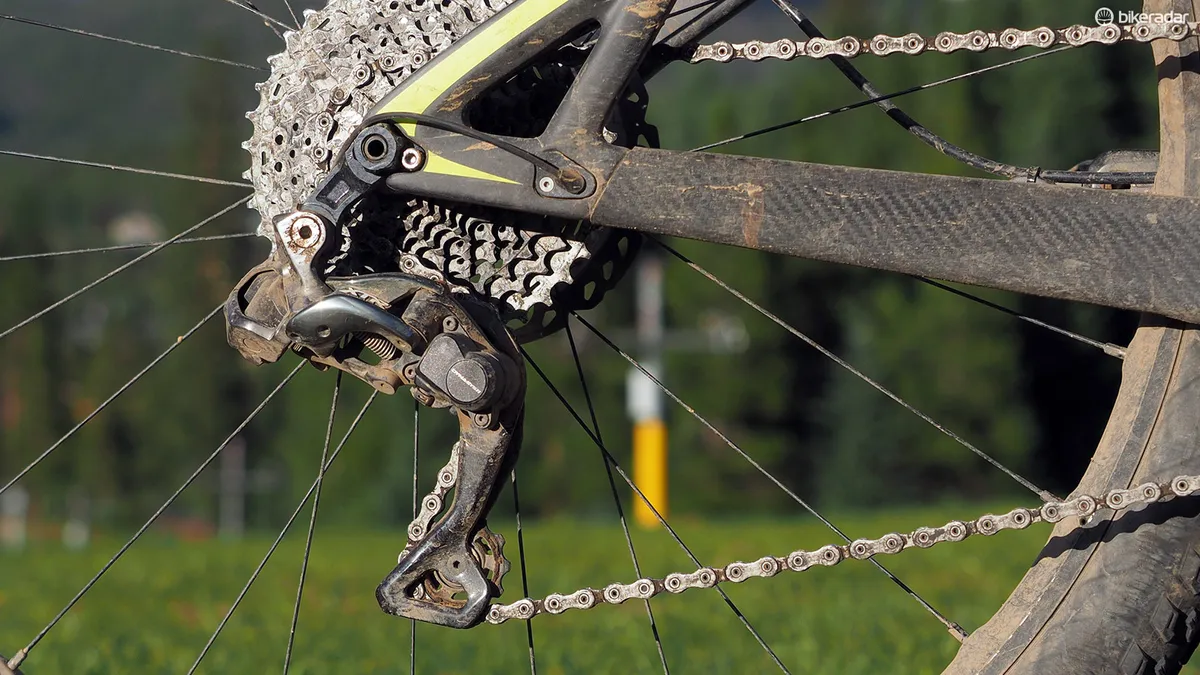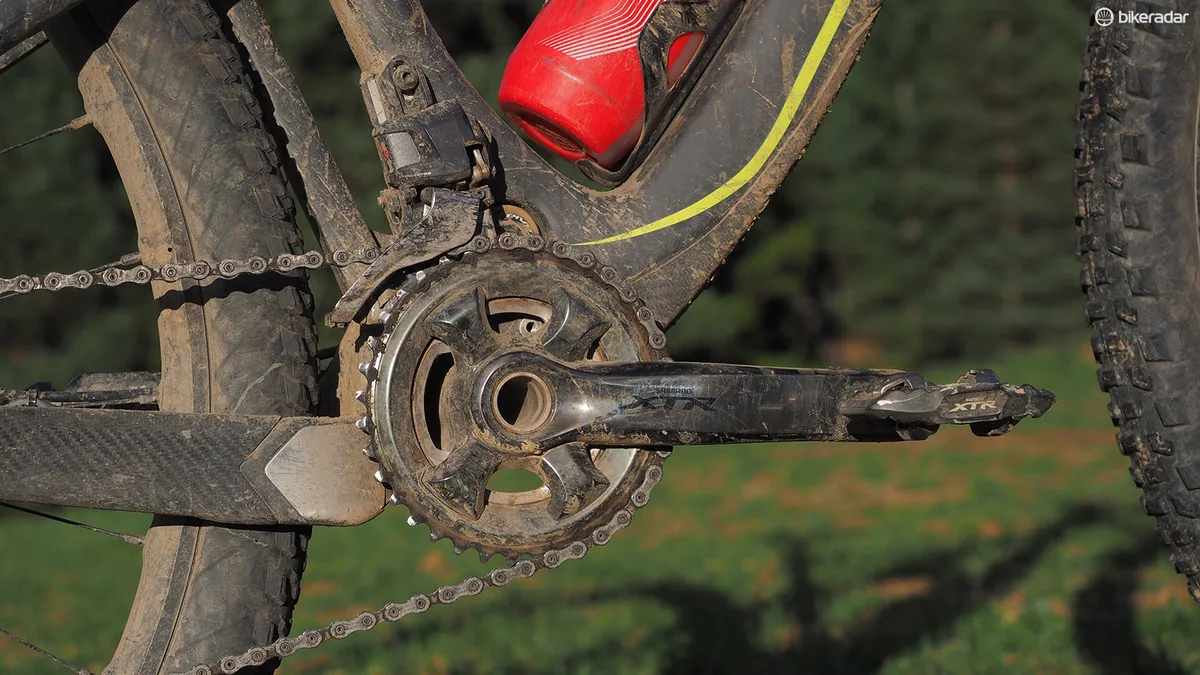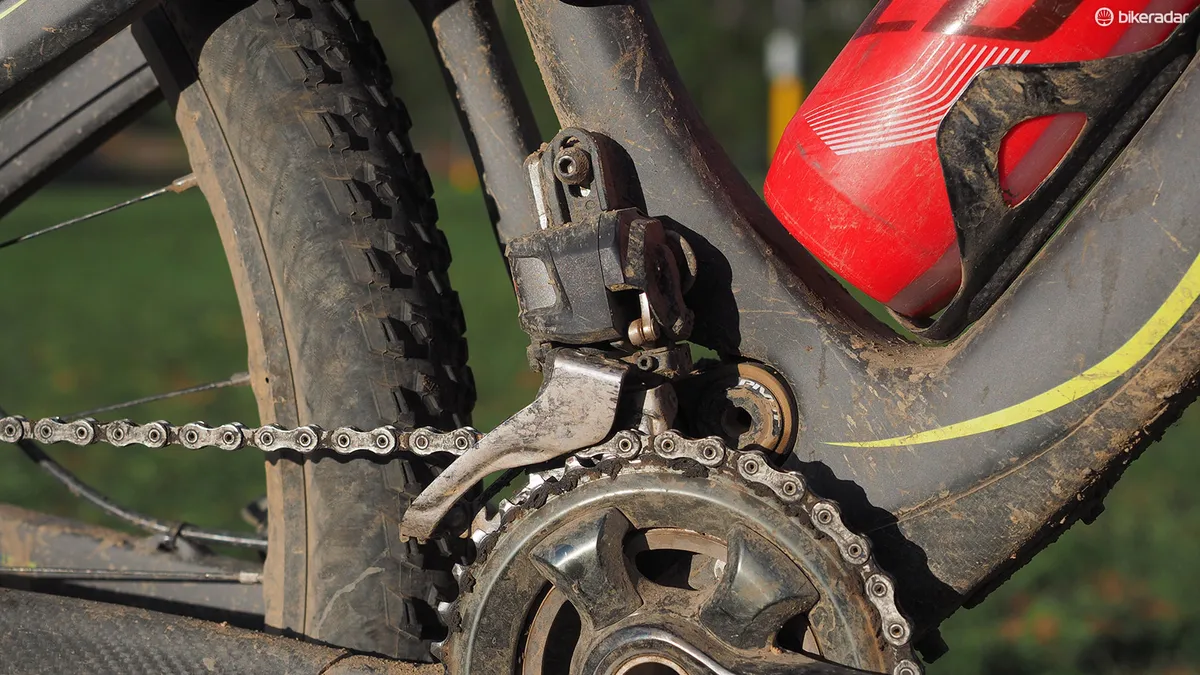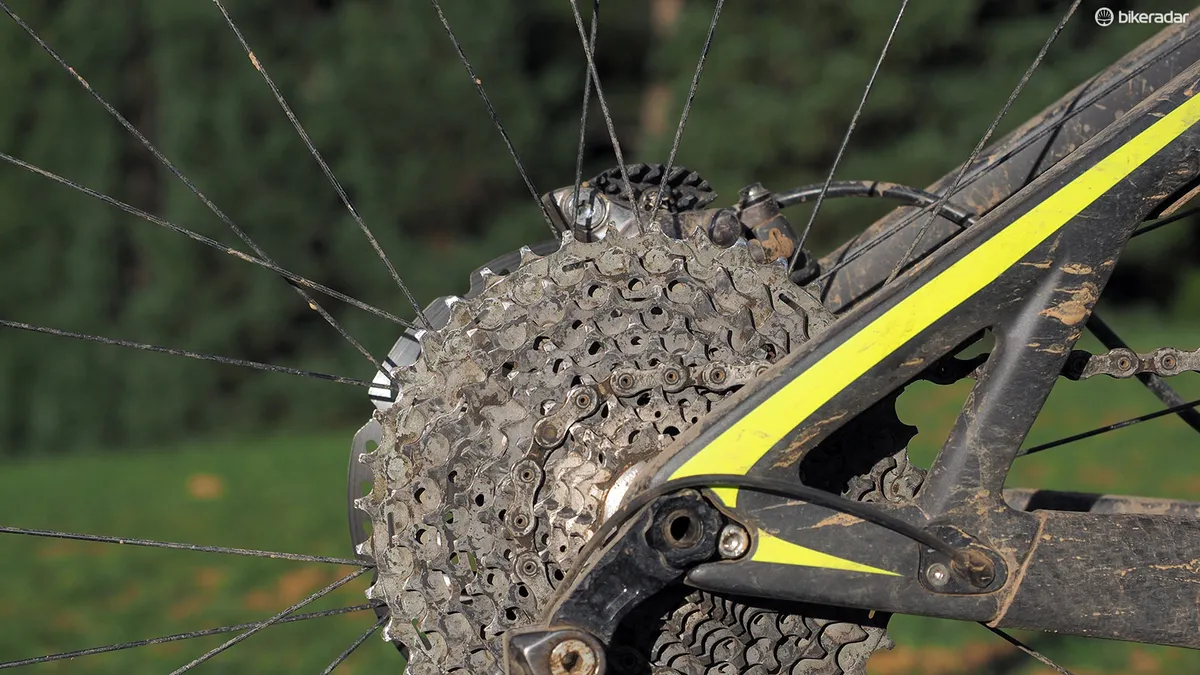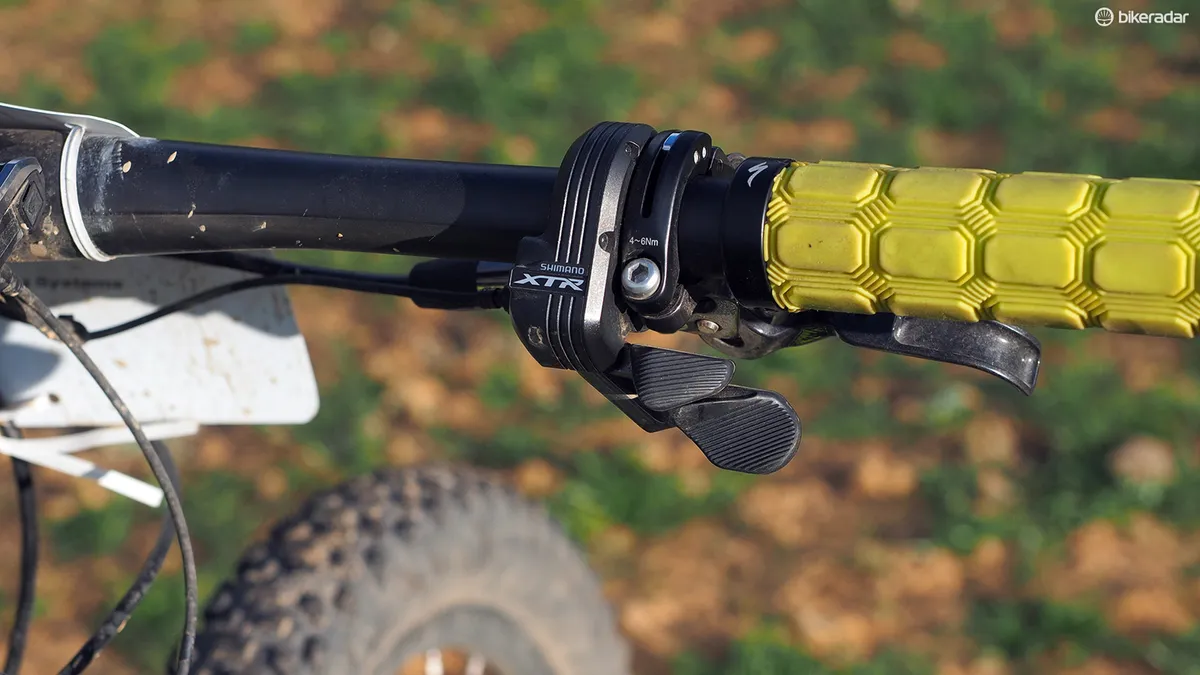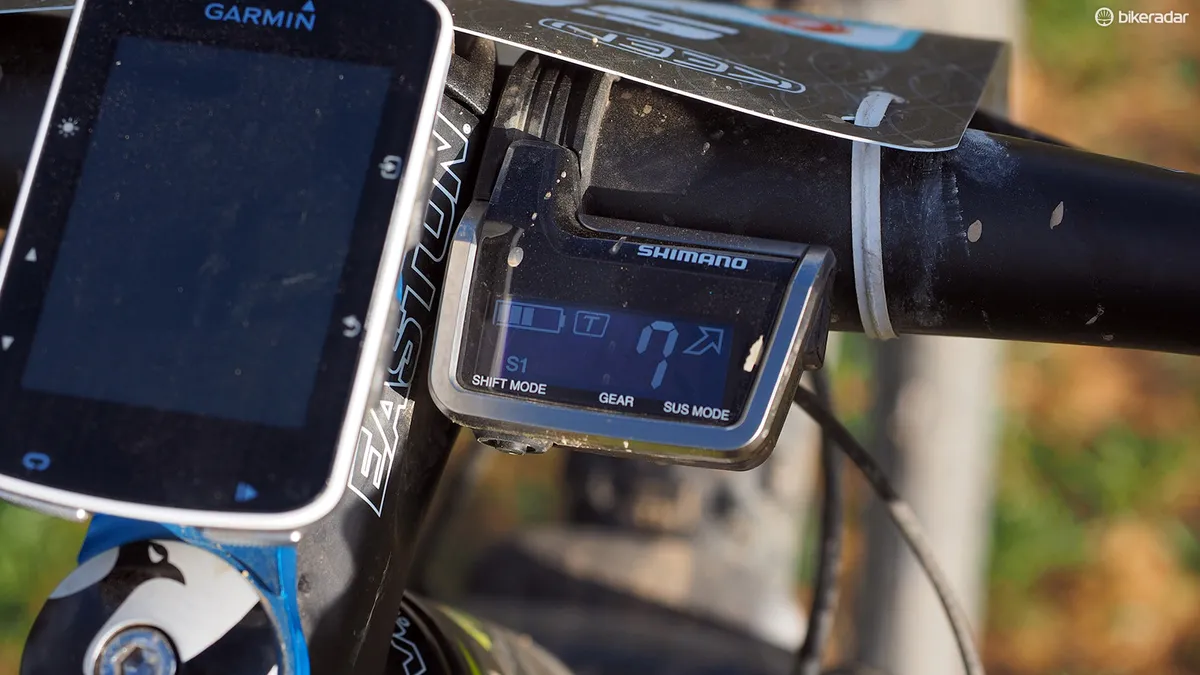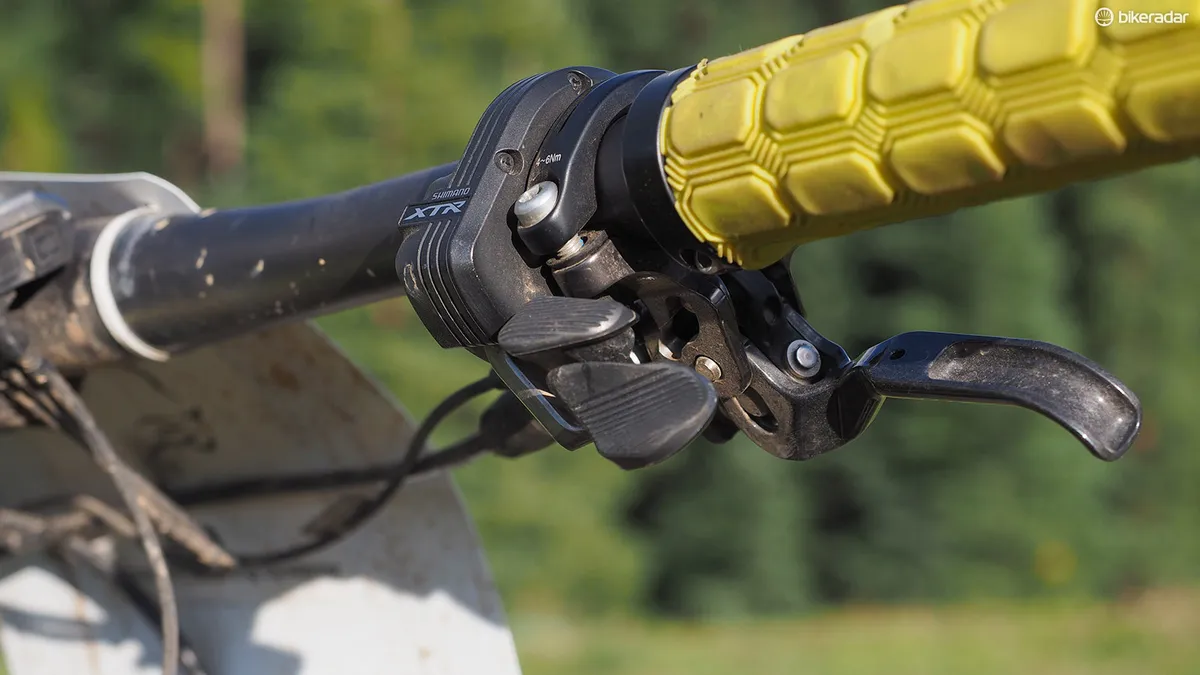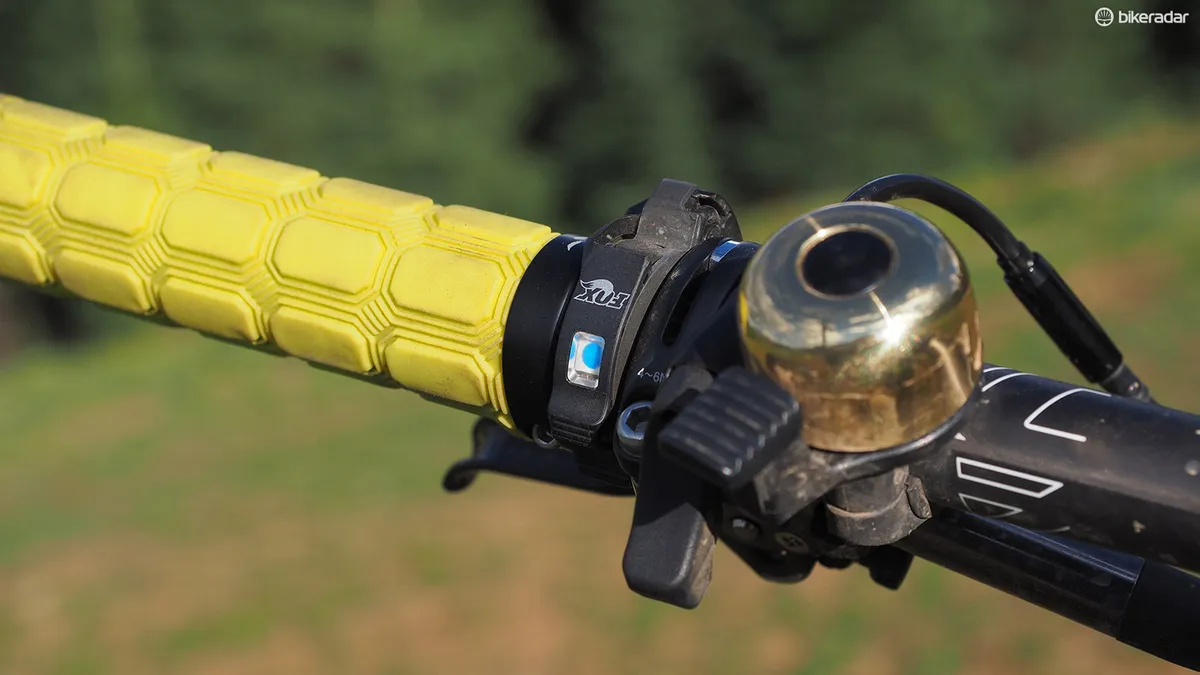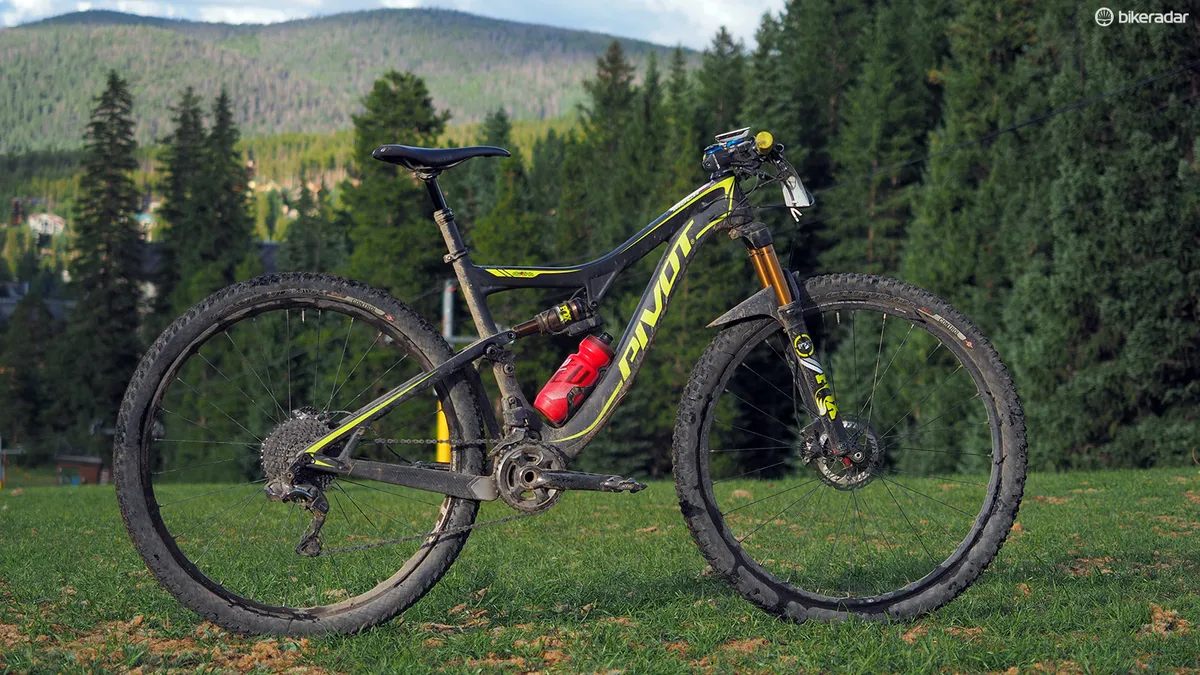Few things have shaken things up in the mountain bike component world lately more than Shimano’s groundbreaking XTR Di2 M9050 electronic group. After years of experience with motor-driven transmissions on the road side, one would expect that the XTR version would knock it out of the park on the first swing – but does it?
Three BikeRadar testers throttled a trio of XTR Di2 2x11 groupsets on two continents for nearly nine months and while it’s undeniably a technological wonder, we still have lots of lingering questions on whether it’s ultimately anything more than an engineering exercise.
Setting a new shifting standard (mostly)
Upon the groupset’s introduction back last October, Shimano essentially promised to do for the mountain bike world what the original Dura-Ace Di2 group did for roadies more than seven years ago: deliver absolutely perfect shifting performance regardless of conditions and with essentially no maintenance required whatsoever (aside from occasionally charging the battery).
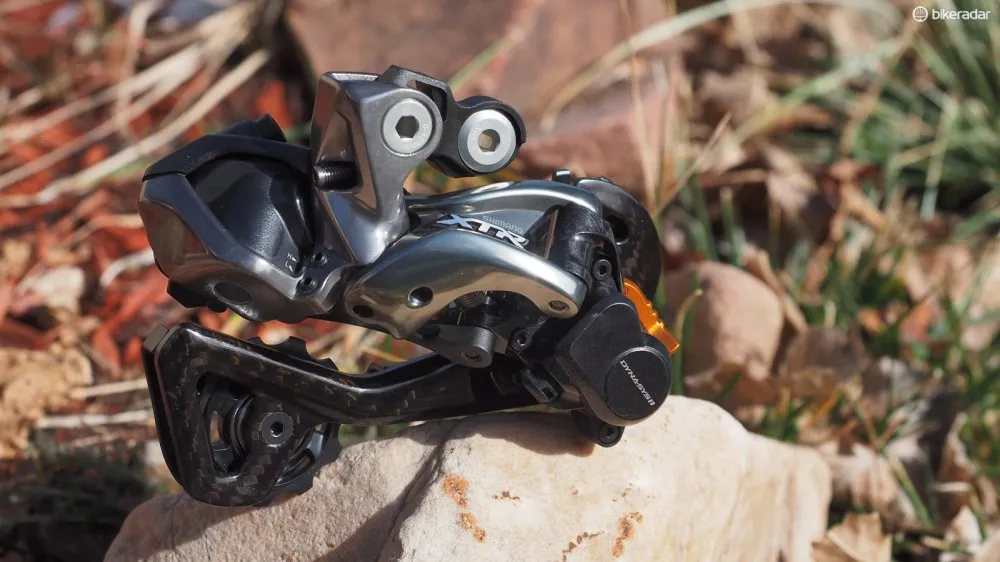
Can a motor and electricity really shift better than current systems? Yes, yes it can
After plenty of initial backlash and skepticism, Di2 is now more than accepted on the road; in fact, nearly everyone who’s ever used both standard and electronic transmissions will admit that the latter just flat-out works better.
Perhaps it's not surprising then that our collective experience with XTR Di2 has been virtually identical, with shift performance that’s nearly flawless – push the shift paddle and you get the same perfect chain movement each and every time, even when the system is horribly caked in thick UK mud or utterly soaked after a freak high Alpine thunderstorm. It’s incredibly precise in its movements, more so than any mechanical transmission we’ve used.
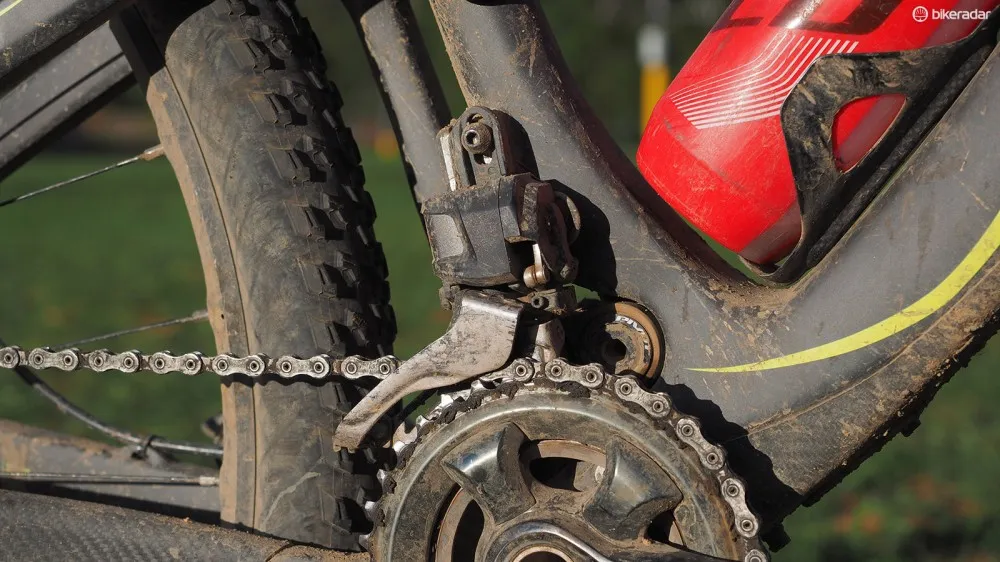
It doesn't matter what you throw at this thing. It's going to move exactly as intended
Not only is the system freakishly consistent in its operation but it’s also uncannily smooth and fast with none of the clunkiness that can occasionally accompany even the most seasoned rider when a shift is executed at a less-than-opportune moment. We’ve all been taught to let up on pedal pressure when shifting but that’s really not necessary with XTR Di2. The system knows just the right place in the cassette or chainring rotation to move the chain, and it does so with ruthless precision – front or rear – even when mashing out of the saddle uphill.
Syncro Shift makes 2x drivetrains relevant again
That XTR Di2 manages to match Dura-Ace Di2 in terms of shifting performance even in the more demanding environment of a trail is impressive enough, but the system actually does one better with the fantastic Syncro Shift function. Whereas a typical multiple-chainring drivetrain would require two separate shifters, Syncro Shift controls the whole transmission with just one with the crossover shifts coming at predetermined steps in the range.
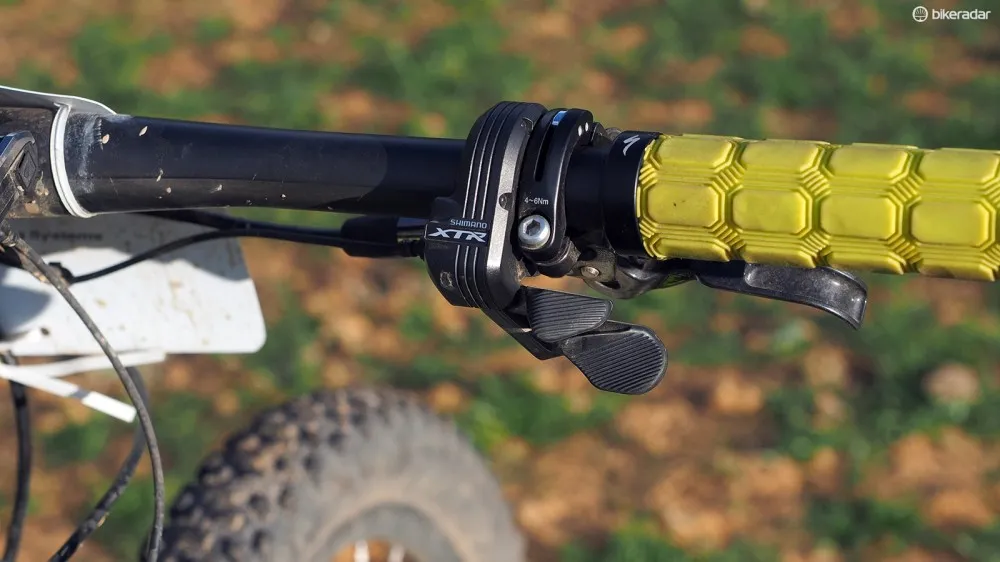
One shifter, two derailleurs. Syncro Shift mode is brilliant
For our 2x11 test drivetrains, we had the system hold on to the outer chainring as long as possible, only dropping down into the inner chainring for the lowest two gear combinations. An audible beep alerts you when a double shift (as in, both the front and rear at the same time) is imminent but in practice, it’s hardly necessary. Shimano’s best-in-class front shifting performance makes even double shifts feel eerily seamless from the rider’s point of view.
While Syncro Shift is certainly neat from a technological standpoint, its implications for drivetrain progression are more significant. Single-chainring drivetrains have quickly taken hold in recent years for good reason: they’re easier to operate, they free up space on the bar, and they generally offer much better chain retention than multiple-chainring drivetrains. Even so, their narrower total gear range generally limits their appeal to fitter and faster riders.
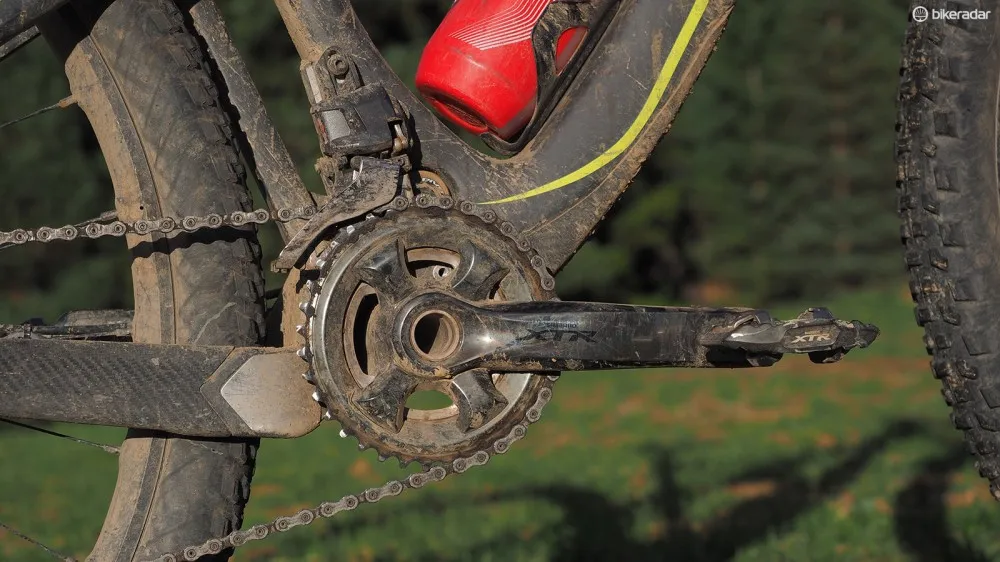
Between Syncro Shift and Shimano's best-ever front shifting performance, XTR Di2 has made 2x drivetrains relevant again
With Syncro Shift, two-chainring drivetrains are suddenly relevant again. With a Syncro Shift-enabled XTR Di2 transmission, you can get most of the benefits of a 1x system but with more range and smaller steps in between gears – even though the XTR’s 11-40t cassette has substantially less spread than what SRAM offers. As with a 1x system, here’s still no extra brainpower required to manage the multiple chainrings and the single shifter leaves plenty of room for dropper seatpost remotes on the other side of the bar.
Chain retention isn’t inherently as good, mind you, but good 2x chain guides already exist for those in need (and they seem to do the trick just fine for recent Enduro World Series champion Tracy Mosely’s Trek Remedy 29).

As good as Syncro Shift is, it'd still be nice if Shimano expanded the range of the current XTR cassette
Moreover, Shimano has done road-going Di2 one better in terms of lever feedback. Many users – myself included – have long criticized Shimano for designing almost no feedback into Di2’s shift buttons. Sure, it works, but the ‘click’ is disappointingly vague and the action arguably too light. Not so with XTR Di2, whose shifter buttons return a satisfying audible and tangible detent that reassuringly indicates you’ve requested a shift.
The XTR Di2 rotary-style shifter also simulates Shimano’s excellent Multi Release feature with two-stage buttons – push a little to change one gear; a little more for two. In fact, I found it much faster (and more predictable) to push the button twice than to hold it down.
Putting it to the test
Few situations highlighted XTR Di2’s outstanding performance during our test sessions than the Breck Epic, a six-day mountain bike stage race held in Colorado with roughly 35,000ft of climbing (and descending!) over 200 miles, all more than 10,000ft above sea level and oftentimes far out in the wilderness with no chance of a cell signal (and similar chances of finding XTR Di2 spares).

Three BikeRadar testers on two continents tried for nine months to kill our XTR Di2 groups to no avail
Perhaps the best thing I could say about the groupset during that ordeal was that its performance was utterly consistent all week despite be doing absolutely no maintenance aside from re-oiling the chain each day and one quick post-stage rinse after getting hit with a nasty midday hailstorm. I topped off the battery after day one but didn’t plug it in again for the rest of the event and finished with three out of five bars still showing on the handlebar-mounted LCD display.
Keep in mind, too, that that’s with a worst-case scenario that included ludicrously long climbs with hundreds of double shifts (shifting up front requires much more power than out back) plus electronically controlled Fox iCTD suspension components at both ends running off of the same battery pack. Just as road-going Di2 has proven over the years, battery life simply isn’t an issue here.
Across the pond, the biggest challenge was typical UK mud but even that couldn’t get the system to hiccup. Even when the drivetrain was woefully heaped in slop,the powerful derailleur motors just kept on keeping on.
Glitches in the brave new electronic world
Not all was rosy with XTR Di2, though.
Although the button feedback was a refreshing change from road-going Di2 levers, all three BikeRadar testers universally lambasted the rotary-style lever layout that Shimano has proudly touted as being more ergonomic than even its own mechanical shifters. It’s nice that the paddles themselves are adjustable laterally but even so, the layout still never felt as intuitive to use as standard Shimano Rapid Fire. For example, even after living and breathing Di2 for six days at the Breck Epic (and after riding the system for nearly the entire summer), I still occasionally tapped the wrong button.
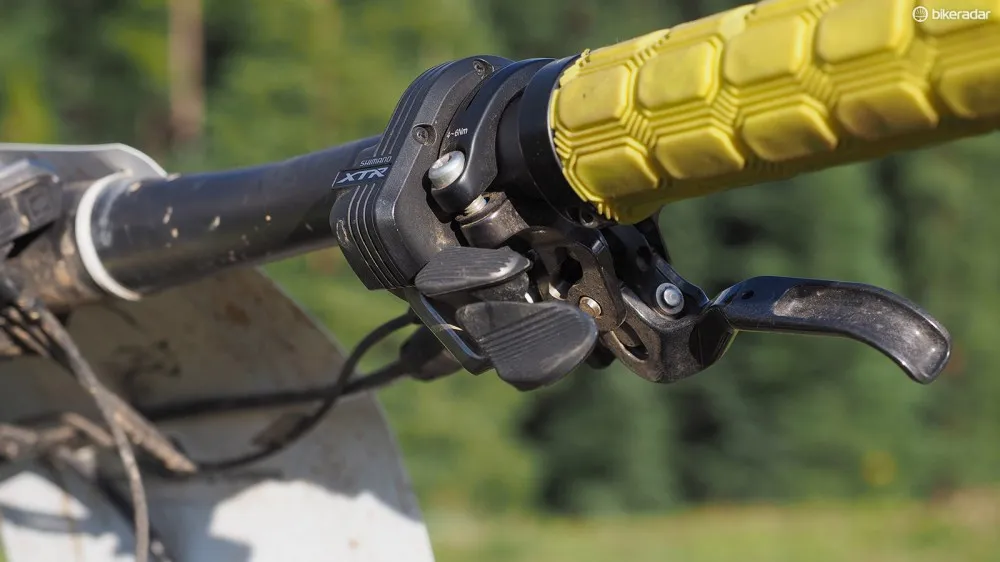
None of us ever fully got on with the XTR Di2 shifter paddle placement, no matter how we adjusted them
Sharp-eyed readers will also notice that we characterized the shifting performance as mostly perfect. Despite careful setup (that included supervision and inspection by a Shimano representative), I still dropped the chain to the inside of the crankset four times during the Breck Epic, always when shifting down from the big-big combination while climbing under load. Granted, this is not an ideal situation but nevertheless, it’s one that XTR Di2 is designed to handle (and is programmed by default to do in Syncro Shift mode).
Making matters worse was the fact that you can’t manually move the front derailleur cage over to re-engage the chain like you could with a mechanical transmission. I had to dismount and wrestle the chain back on to the chainring by hand, each time watching other riders pedal by in the process and occasionally waiting a pretty long time before there was a gap in the long line of marching ants before I could squeeze back in.
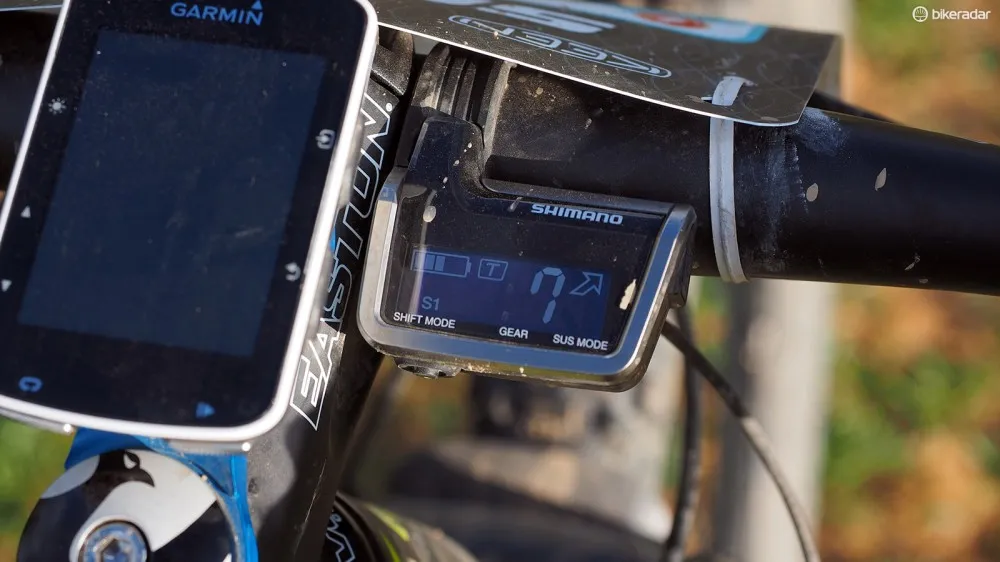
Battery life just isn't a problem so stop worrying about it. The display is highly legible even in bright sunlight
The standard XTR transmission also holds an edge over Di2 in terms of weight, although it’s a pretty minor difference all things considered – just 84g even after factoring in the additional battery and display unit that the mechanical version doesn’t require. That gap draws even narrower, too, when you consider that Di2’s e-tube wiring setup weighs less than steel cables and housing.
Component weights:
XTR Di2 M9050
XTR M9000
Shifters (pair)
129g
200g
Rear derailleur (medium-length cage)
290g
221g
Front derailleur (high direct mount)
140g
135g
SM-BTR2-1 battery
51g
n/a
SC-M9050 display unit
30g
n/a
Total:
640g
556g
Array
By far, the biggest downside to XTR Di2 is its unquestionably exorbitant cost. A complete transmission alone (as in no cranks and no brakes) is nearly three times more expensive than a comparable XTR mechanical setup, and more than many riders spent on their entire bike.

Whatever you do, DO NOT BREAK THIS
Putting it into even more perspective is the cost of replacement components. Although road crashes tend to be more damaging per incident (blacktop is horribly unforgiving after all), crashes on the trail are certainly more frequent and there’s also a far greater chance of drivetrain damage from debris. For the price of a replacement XTR Di2 rear derailleur alone, you could buy not one, but two complete Shimano Deore XT 2x11 drivetrains (including the shifters, derailleurs, crankset, chain, and cassette) – and still have money left over for beer.
For sure, XTR Di2 should cost more than the standard XTR bits but even Shimano’s own Di2 road groups don’t carry as big a cost penalty compared with their mechanical counterparts. By any measure, XTR Di2 is insanely, ridiculously pricey.
Okay, so XTR Di2 works awesome – does it matter?
Therein lies the biggest question surrounding Shimano’s groundbreaking XTR Di2 transmission. Sure, the performance it offers is second to none but is that enough to justify its cost?
As much as we like the two-chainring configuration (at least in Syncro Shift mode) for its wider range as compared to even the best conventional 1x systems, there are still plenty of folks who aren’t willing to go back to multiple chainrings – and with an oncoming flood of expanded-range 1x-specific cassettes, the reasons are even less compelling assuming you’re okay with pretty big ratio jumps in between gears.
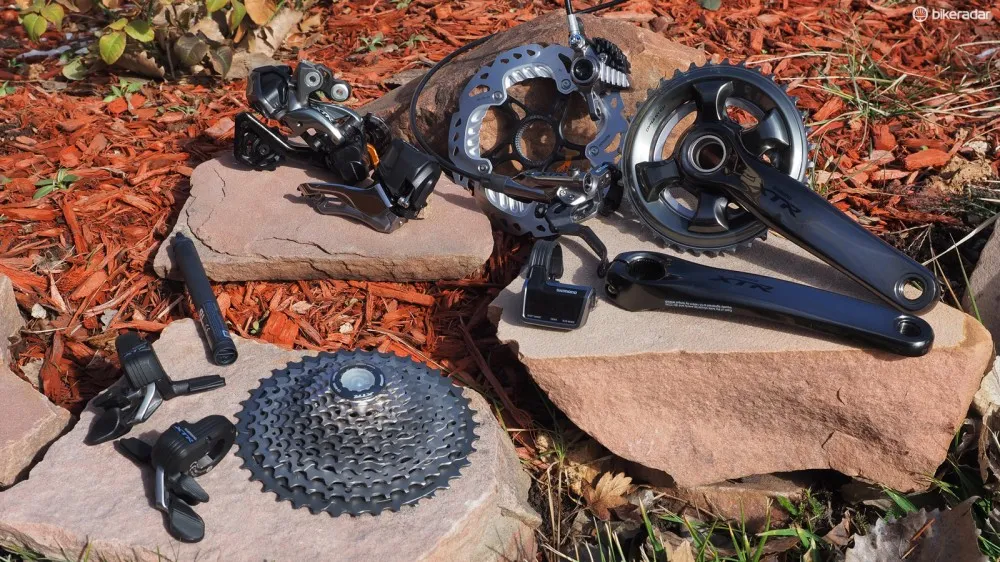
XTR Di2 works incredibly well – but is that enough? We're not so sure
Tom Marvin, technical editor for BikeRadar’s sister print publication, What Mountain Bike, perhaps sums up the quandary best.
“I think Syncro Shift is what makes the group work as a whole. If you want the top end of performance race/marathon components, I think Di2 does deliver that,” he says.
“But I don’t think Di2 is particularly relevant for 99.9 percent of riders in its current format, and I’d probably not recommend it to many people. If all you want is a 1x trail groupset, you’re better off with something else. I think it really is equivalent to a track-car – ace to have if you can afford it and don’t particularly need to justify it to the other half. You have it because it’s nice to have. The question is, is there anything wrong with that?”
For more information, visit www.shimano.com
